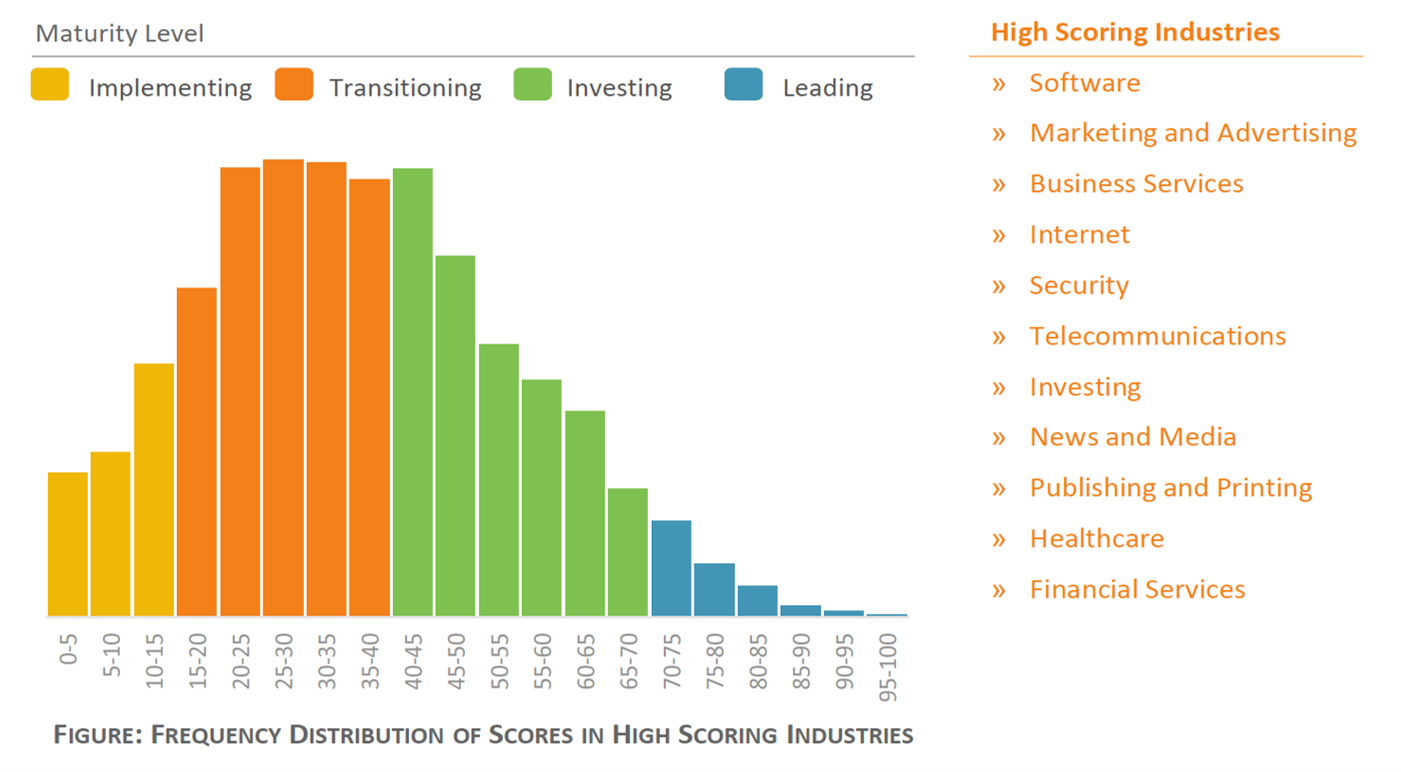 Content marketing, when done well, is an incredibly powerful tactic to boost brand awareness and drive revenue. But just how “mature” has content marketing actually become at B2B organizations and how does this vary by industry? We wanted to find out. So we created software, the Content Marketing Grader (click on the link to have your own website graded), and used it to analyze the content marketing maturity of over 20,000 websites across 43 B2B industries.
Content marketing, when done well, is an incredibly powerful tactic to boost brand awareness and drive revenue. But just how “mature” has content marketing actually become at B2B organizations and how does this vary by industry? We wanted to find out. So we created software, the Content Marketing Grader (click on the link to have your own website graded), and used it to analyze the content marketing maturity of over 20,000 websites across 43 B2B industries.
In a our newly released Industry Benchmark Report, we assess the results of this study. It includes a foreword by Robert Rose of the Content Marketing Institute on what the results mean for B2B marketers, as well as key takeaways for marketers on how they can elevate their content marketing to differentiate themselves in their industries.
Says Robert Rose, Chief Strategy Officer at the Content Marketing Institute, “There is an opportunity in any of the industries examined to reboot content programs and actually emerge as a differentiated leader. The messy middle shows that at least something is working. The imperative now is to get good at developing a differentiated content marketing strategy – and fast.”
The following shares our research methodology and a snapshot of the results.

Get the Content Marketing Maturity
Industry Benchmark Report
Methodology
Based on automated analysis from the Content Marketing Grader, each of the analyzed 20,000 websites was awarded a score between 0 and 100 to represent their measured content marketing maturity and level of investment in content and content related technology. The scores fall into four tiers of companies:
- Implementing (score 1-15): The basics of content marketing are only partially implemented.
- Transitioning (score 16-40): The basics are covered, and content marketing best practices are implemented to varying degrees.
- Investing (score 41-70): Content marketing has been holistically implemented and ongoing investments are being made on content production and enabling technology.
- Leaders (score 71-100): Content marketing has been organizationally embraced, implemented, and operationalized.
In the assessment process, the total score is based on five underlying components that each focus on a distinct area of content marketing best practices, such as “content architecture” and “content formats.” These 5 components are described more in the report.
Snapshot of Results
- When viewed by industry, there are specific industries that on average score much higher than others. Technology, Marketing, and Business Services companies are currently leading the way to content marketing maturity. The majority of industries are in the middle with various levels of adoption of current best practices (see graphic “Average Maturity by Industry”).
- There are Leaders and Investing companies across all industries. Content marketing is truly a horizontal movement, taking strong hold in companies regardless of specific industry adoption rates (see graphic “Leaders Exist in All Industries”).
- In the high scoring industries, the distribution of scores is a fairly standard bell curve. Companies in these industries generally are in the Transitioning or Investing range of scores. They have the basics covered, are adopting content marketing best practices to varying degrees, and many are actively investing in operationalizing content marketing (see graphic “Insights for Marketers in the High Scoring Industries”). If you are in one of these industries:
- To be at parity, you must be practicing content marketing and planning what your next investments will be to stay in the pack.
- To stand out, you must truly embrace the practices, technology, and operations of content marketing. You must have fresh, rich, and varied content across channels, and have technology to maximize the impact of the content.
- In the low scoring industries, the score distribution is more like a ski slope. The majority of companies are either in the Basic or lower range of the Transitioning scores. They are only partially implementing content marketing best practices, and ongoing investments are minimal or non-existent (see graphic “Insights for Marketers in the Low Scoring Industries”). If you are in one of these industries:
- To be at parity, you need to have the basics covered adequately. Your content needs to be across the channels relevant to your audience and findable by search engines and people.
- To stand out, simply starting to implement today’s content marketing best practices will get you above the crowd.
The benchmark report provides additional analysis and insights, including:
- The relationship between amount of web content and content marketing maturity grade
- The correlation between web traffic and content marketing maturity grade
- Trends in which types of best practices companies invest in as they mature their content marketing
Use the Content Marketing Grader to Assess
Your Website’s Content Marketing Maturity

